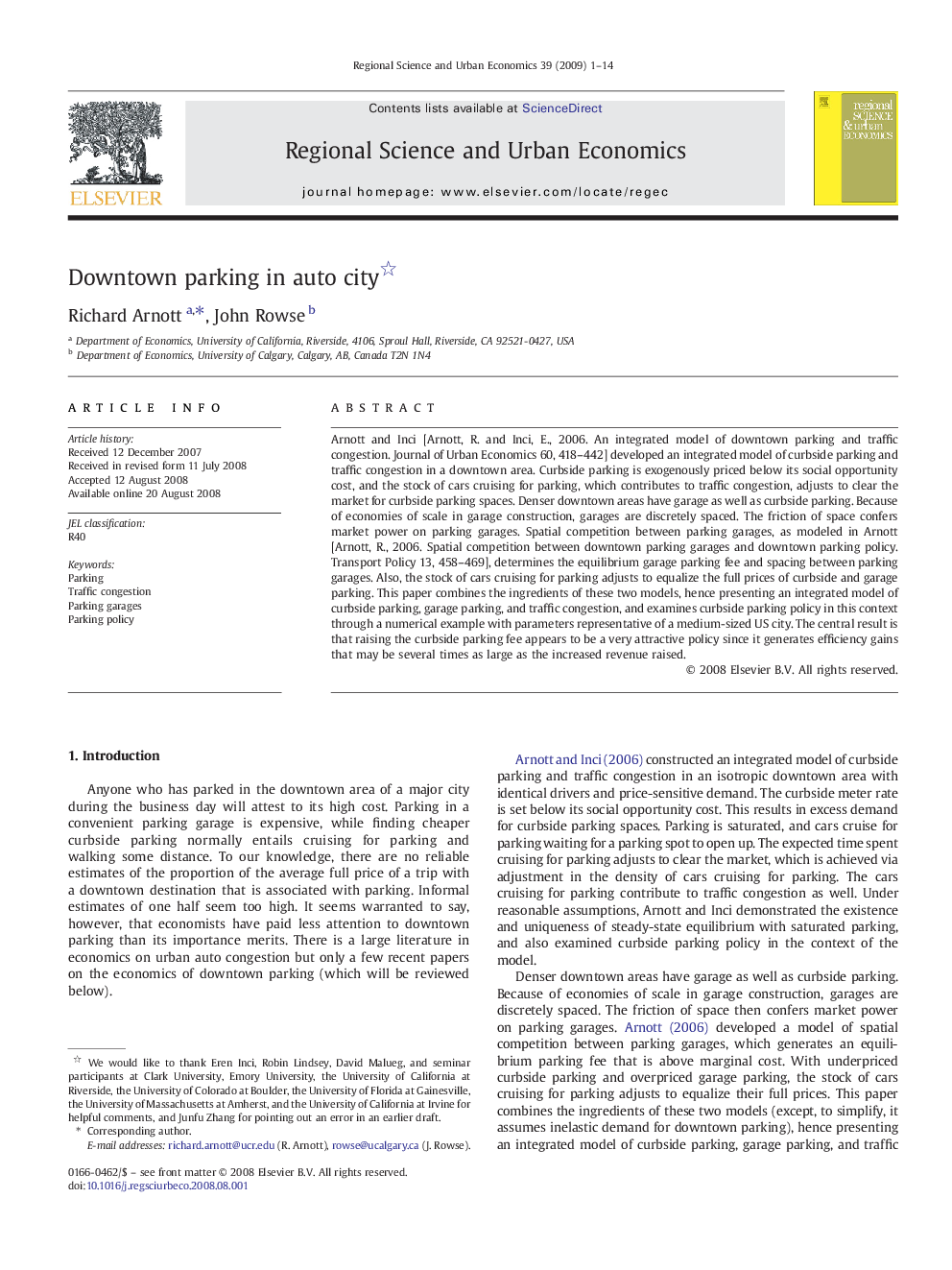| Article ID | Journal | Published Year | Pages | File Type |
|---|---|---|---|---|
| 983904 | Regional Science and Urban Economics | 2009 | 14 Pages |
Arnott and Inci [Arnott, R. and Inci, E., 2006. An integrated model of downtown parking and traffic congestion. Journal of Urban Economics 60, 418–442] developed an integrated model of curbside parking and traffic congestion in a downtown area. Curbside parking is exogenously priced below its social opportunity cost, and the stock of cars cruising for parking, which contributes to traffic congestion, adjusts to clear the market for curbside parking spaces. Denser downtown areas have garage as well as curbside parking. Because of economies of scale in garage construction, garages are discretely spaced. The friction of space confers market power on parking garages. Spatial competition between parking garages, as modeled in Arnott [Arnott, R., 2006. Spatial competition between downtown parking garages and downtown parking policy. Transport Policy 13, 458–469], determines the equilibrium garage parking fee and spacing between parking garages. Also, the stock of cars cruising for parking adjusts to equalize the full prices of curbside and garage parking. This paper combines the ingredients of these two models, hence presenting an integrated model of curbside parking, garage parking, and traffic congestion, and examines curbside parking policy in this context through a numerical example with parameters representative of a medium-sized US city. The central result is that raising the curbside parking fee appears to be a very attractive policy since it generates efficiency gains that may be several times as large as the increased revenue raised.
